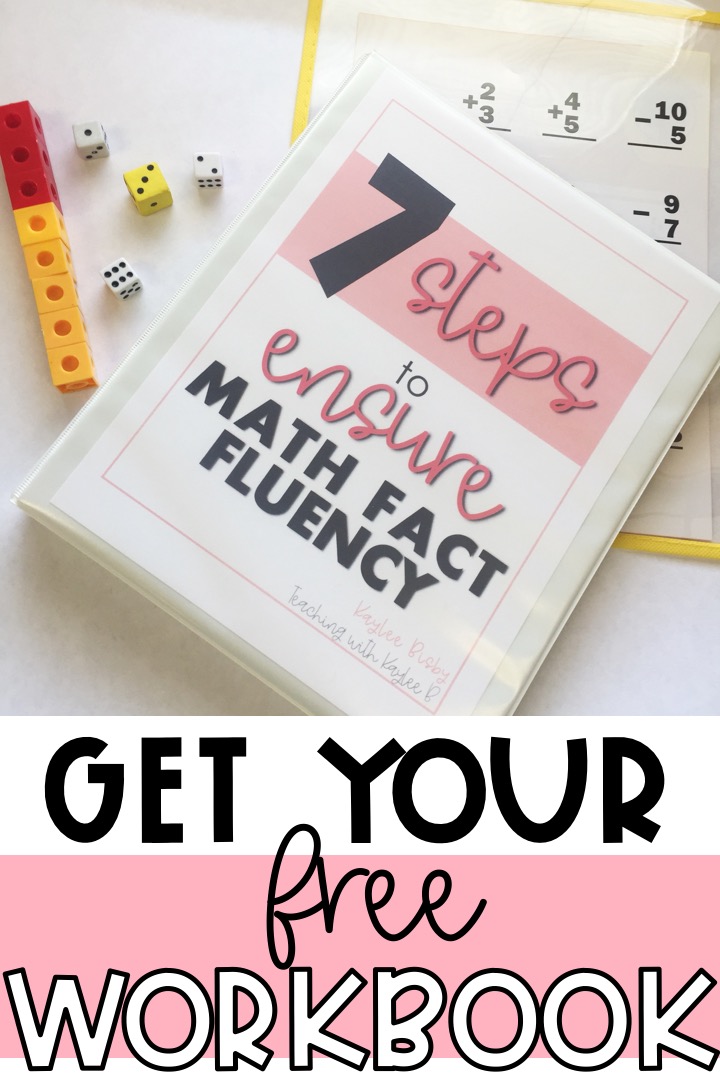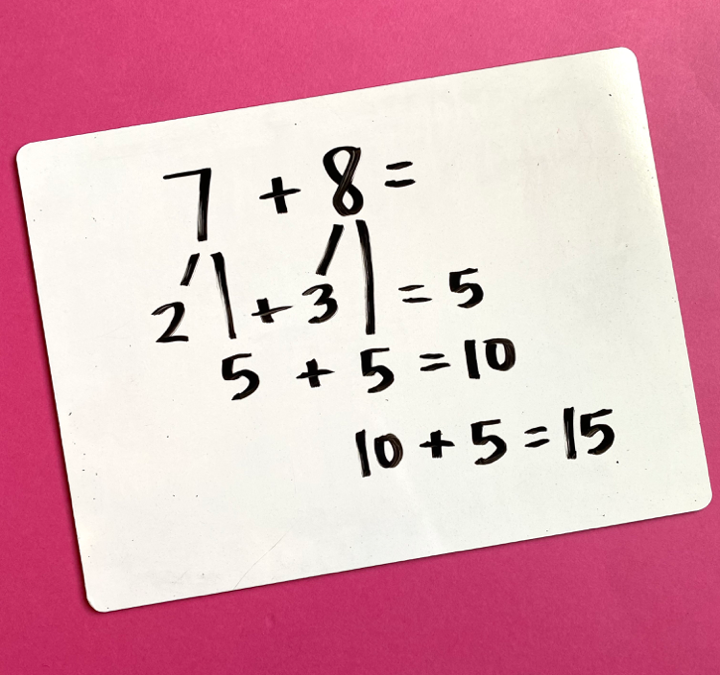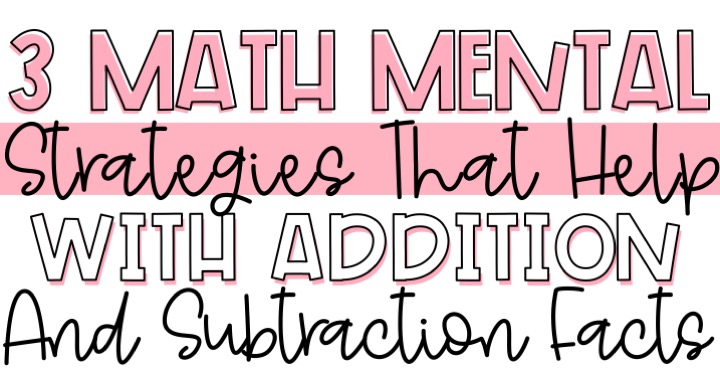
The goal is to get students to math fact mastery. On a student’s journey to math fact mastery they use counting strategies, and then they use math mental strategies.
What Are Mental Math Strategies
Mental math strategies for addition and subtraction are when students use reasoning in their heads to solve answers to math facts that are not easy to memorize. Students can use these math mental strategies quickly and can get to the answer in 5 second or less. After doing them so many times, students start to make connections, see patterns, and commit these addition and subtraction facts to memory.
Did you know I have a whole free guide to help 1st and 2nd grade teachers get their students to math fact fluency? Download it free here: The 7 Steps to Ensure Math Fact Fluency.
Okay, let’s get into the 3 math mental strategies students need to learn to help with addition and subtraction facts.
Math Mental Strategies
Doubles Facts
Our brains love novelty. Doubles facts are a novelty to our brains! That is why doubles facts are easier for students to memorize. Once they have them memorized, students can use them to find the answer to other facts. For example, if a student knows 7+7=14, then they can easily find the answer to 7+8. They can reason in their minds that 8 is one more than 7. So the answer needs to be one more than 14, so the answer is 15.
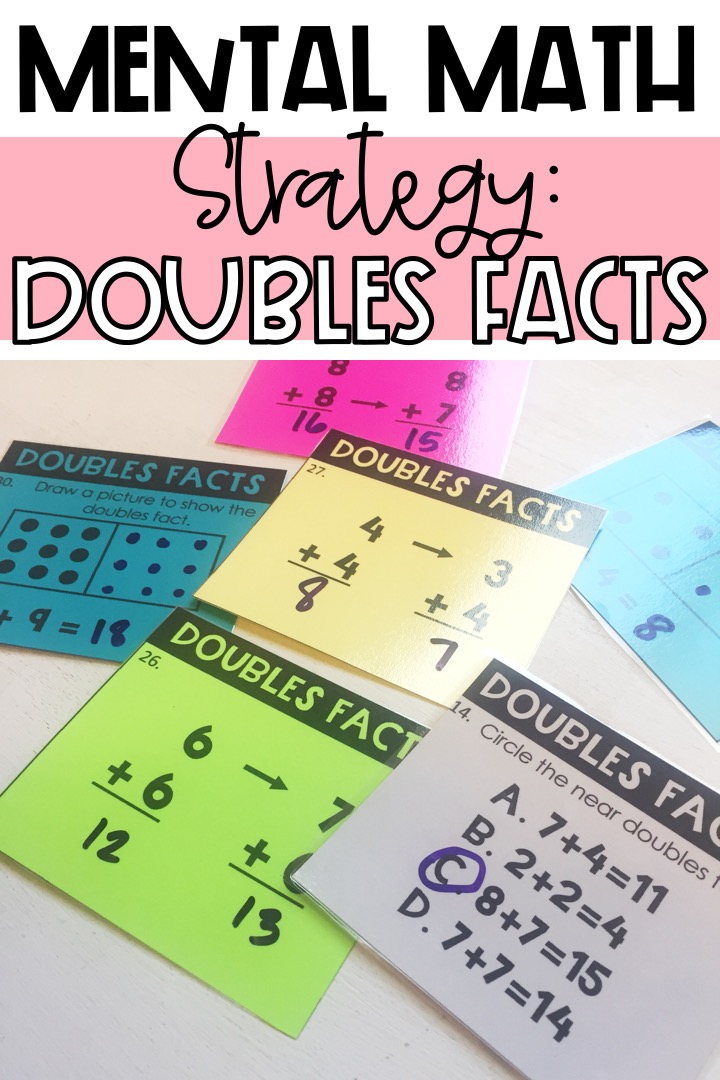
This math mental strategy helps students use math facts they know, to find math facts they don’t know.
This can also be a mental math strategy for subtraction. If a student knows 12-6=6, then they can easily find 12-7. Since we are taking away one more than 6, the answer has to be one less than 6. So the answer is 5.
Now this does take some practice for students to get this math mental strategy down. But I model this strategy, display mental math anchor charts, and have my students practice with doubles fact strategy task cards. Find the anchor charts and task cards I use here.
To learn more about teaching about Doubles Fact Strategy, read this blog post here.
Make Ten Strategy
It is easy for our brains to mentally add to ten. When we break away numbers to get to ten, it makes addition and subtraction easier for students. Let me give you an example. If we have the equation 8+3, we are going to break 3 apart to get 8 up to ten. I break 3 into 2 and 1. 8+2=10 and one more is 11, so the answer is eleven.
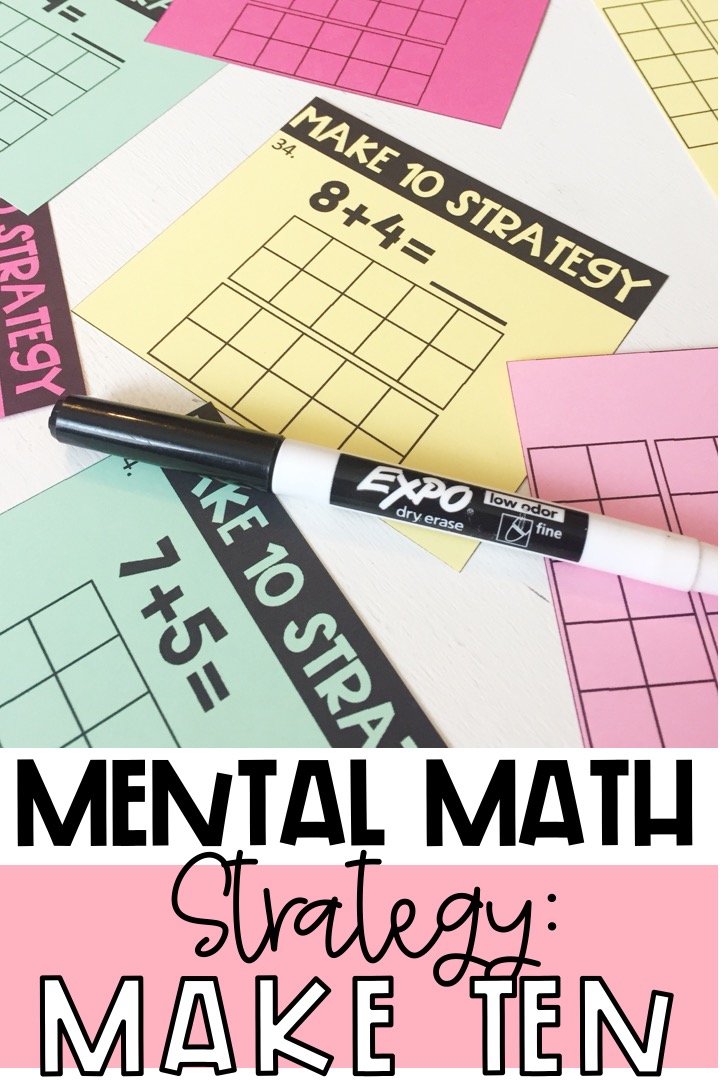
Practicing with ten frames helps students move this strategy to a mental math strategy for addition and subtraction.
You can even use this math mental strategy to help with subtraction. If the equation is 14-6, I’m going to break 6 apart into 4 and 2. 14-4=10, and 10-2=8, so the answer is 8.
For students to be successful with this strategy, I model it with ten frames, hang up anchor charts, and give students lots of practice with ten frames with my Make Ten Strategy task cards. Find the addition version here and the subtraction version here.
To learn more about teaching the Make Ten Strategy read this blog post here: How to Teach the Make Ten Strategy.
Break Apart into 5s
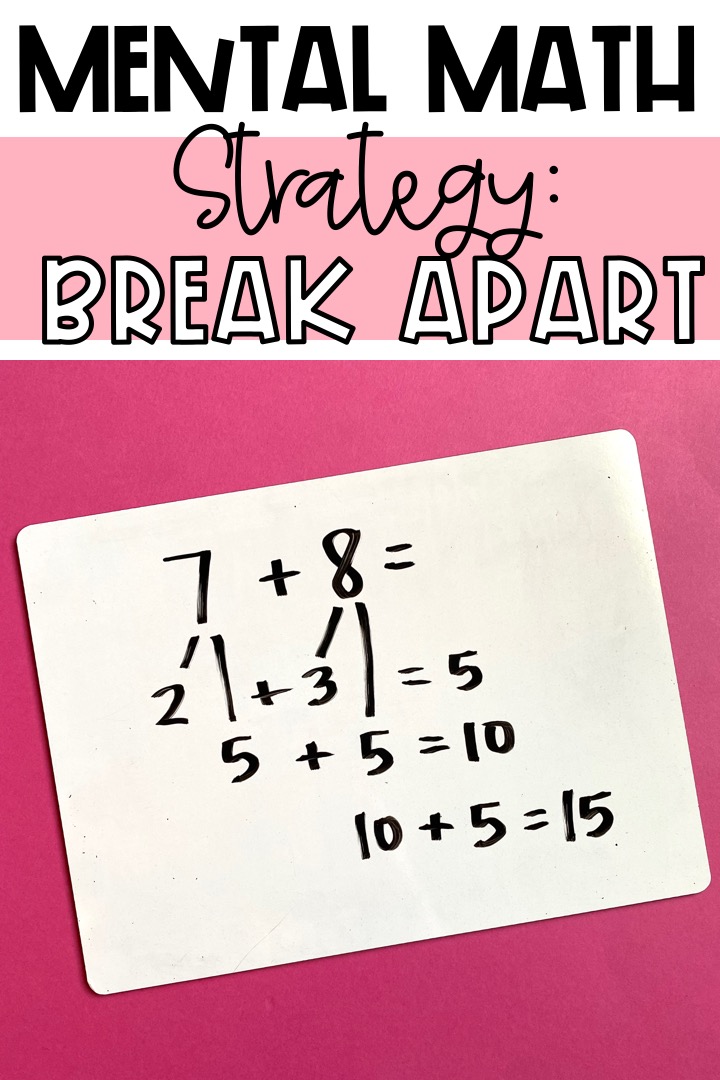
When students discover they can break apart numbers to make adding and subtracting easier, it can be a very use math mental strategy.
It’s easy for students to work with 5s. For example, if the equation is 7+8, you can break apart 7 into 5 and 2. And break apart 8 into 5 and 3. 5+5 equals 10. 2+3=5. 10+5=15. For this strategy students need to be proficient at decomposing numbers. I have a blog post all about teaching students how to decompose numbers. Read it here: Why Decomposing Numbers is the Best Thing to Help Students with Math Facts
Learning and using math mental strategies is the last step for students to reach math fact mastery. For a one page print out off all the math fact strategies I teach to my students, download my free guide for 1st and 2nd grade teachers here: The 7 Steps to Ensure Math Fact Fluency
